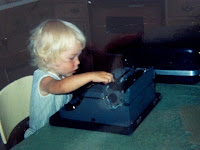I’ve released a new book on the craft of writing, called You
Can Write for Children: How to
Write Great Stories, Articles, and Books for Kids and Teenagers. To
celebrate the release, I’m sharing a excerpt from the chapter on Critiques. Last week I shared the
intro to the chapter and advice on getting feedback
from family and friends. Today, let's look at getting feedback from other
writers.
Critiquing with Other
Writers
Joining a critique group is often a great way to get
feedback as well as emotional support for your journey as a writer. Reach out through
local writing groups, writers’ discussion boards, or Goodreads author groups.
The Society of Children’s Book Writers and Illustrators (SCBWI) “Blueboard” discussion boards
have a section specifically for arranging manuscript critique exchanges. This
section is available to SCBWI members only. You can also try putting up notices
in libraries, bookstores, and cafes. (Be careful about listing personal
information, and make sure you meet strangers in a public place.)
When you critique each other, try to keep in mind the “sandwich”
method of giving feedback. You start by saying something you like about the
manuscript. Then you offer some suggestions or ask questions. Finally, you end
with more praise. When the more critical comments are sandwiched between
compliments, it’s easier to accept the advice. Note also that you should be
offering advice, not criticism. What’s the difference?
Your story is boring. – Criticism
I didn’t notice a lot of conflict. Maybe if she had a
stronger goal, with higher stakes, the story would be more dramatic. – Advice
Your character is a brat. I hated her. – Criticism
I couldn’t really identify with your character. I wonder
what about her appealed to you? Maybe if the reader understood her better, she’d
be more likable. – Advice
 |
| Conferences are a way to meet other writers |
Criticism points out a problem, often in a mean way. That
tends to leave the writer discouraged and not wanting to write anymore. Advice
points out problems in a gentler way, ideally with ideas for fixing the
problem. Suggestions should be presented as options, not absolute truth. Advice
acknowledges that this is only one reader’s opinion; others may have a
different reaction, and ultimately it’s the writer’s goal that matters. Good
advice leaves the writer enthusiastic about working on the story.
Have you struggled to
find a good critique group, or do you have a success story to share?
Over the next few weeks, I'll be discussing critique group
challenges and characters, and then offering advice on taking classes and
hiring a professional editor.
You can get this whole essay, and a lot more – including a
chapter on Advanced Critique Questions – in
You Can Write for Children: A Guide
to Writing Great Stories, Articles, and Books for Kids and Teenagers.
Remember the magic of bedtime stories? When you write for
children, you have the most appreciative audience in the world. But to reach
that audience, you need to write fresh, dynamic stories, whether you’re writing
rhymed picture books, middle grade mysteries, edgy teen novels, nonfiction, or
something else.
Sign up for Chris’s Workshop
Newsletter for classes and critique offers.









